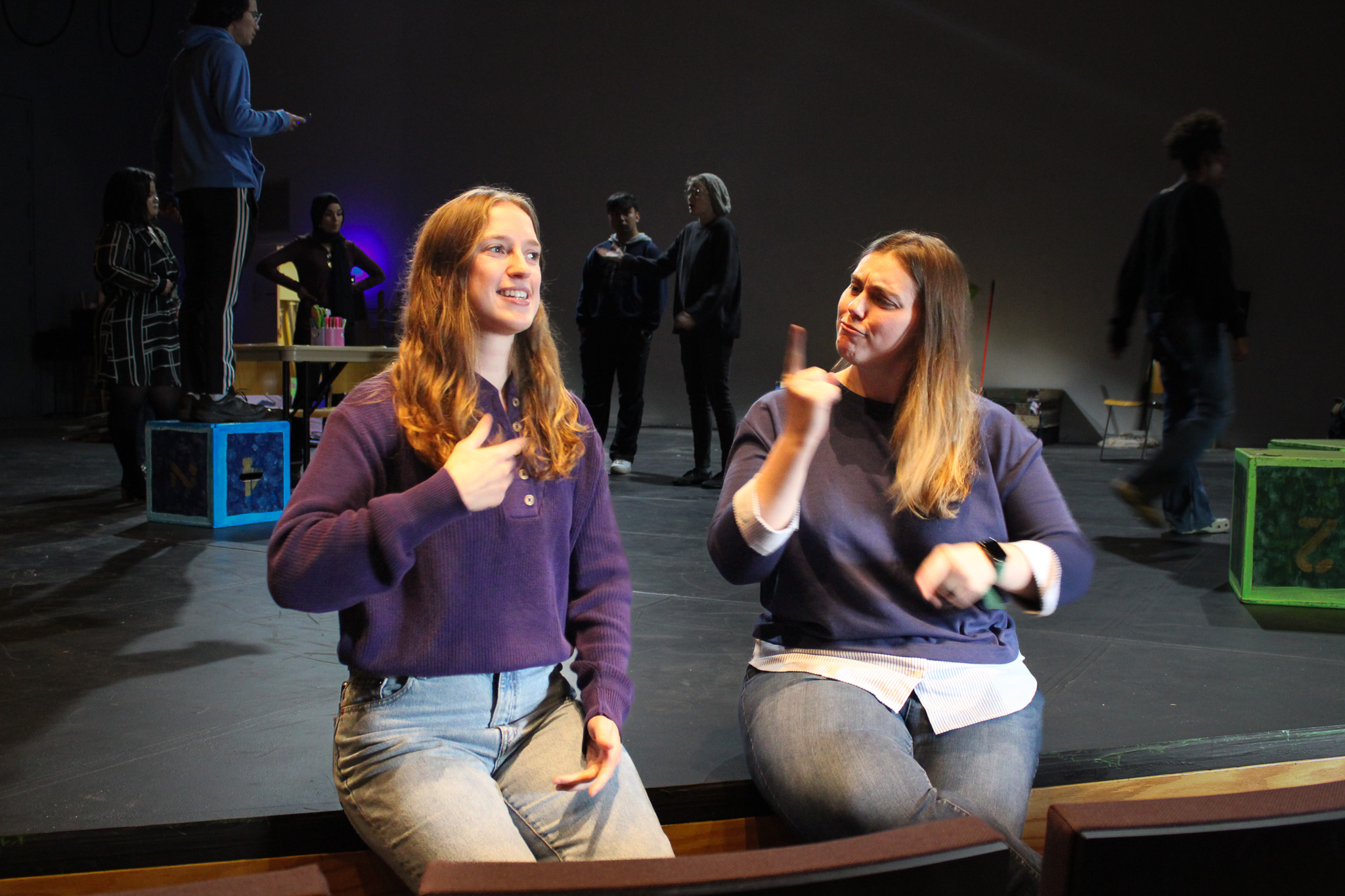Goshen College’s fall play “She Kills Monsters” was performed the last two weekends by a cast determined to bring the story to life. The presence of American Sign Language interpreters on Sunday Nov. 10 was also a part of the efforts to ensure that deaf and hard of hearing individuals could enjoy the performance just as much as their hearing peers.
“Every play in GC had ASL interpreting which I think is very unique to GC, but it shouldn’t be. More actors should be able to work with interpreting,” said Fatima Zahara, senior theater and music major who played Agnes in the play.This sentiment was shared by Nat Pineda Vasquez, junior music major: “It’s a pretty interesting experience,” she said. “I actually got to interact with them this time and meet the interpreter for Steve and be able to connect in some ways, seeing how interesting and intricate it is how they act my character.”
The preparation for the interpreters to perform is different from other types of interpreting. Here, they get the script ahead of time and are able to practice to make sure they represent the characters well. Ally Roskos-Neilson, ASL student interpreter, ASL club president and an interpreter for the play, said, “When it is a really complicated part, I will practice it over and over again until I feel comfortable.” She added, “Lots of time I will have another person read the part for me so I can practice at the pace of the live performance.”
In this production, zone interpreting, where interpreters are assigned a specific area of the stage and remain there through the performance, was incorporated. This approach helped create a more integrated experience for the audience noted Maille Goodwill, first-year social work and ASL interpreting major who played an evil cheerleader: “It makes it feel less separated — from other shows I have gone to even — where they are on the stage versus like in the corner. Because you’re not having to look two feet away from the stage. You’re still in with what’s going on and you are still involved.”
Working with the interpreters, the cast had to slightly adapt their delivery to create a fully inclusive experience. Zahara explained, “I think that just making sure that the words that I say match the words on paper. If you mess up even one word that can change what the interpreter has to do.”
With some characters, the preparation was more straightforward. Pineda Vasquez said, “Steve is very loud and his words are very elongated so that gives plenty of time to translate.”
Goodwill, on the other hand, had a different experience from Pineda Vasquez: “I’m quiet and I talk kinda quickly,” she said, which was confirmed by Roskos-Neilson: “The hardest part was interpreting for the two evil cheerleaders.” Each of the interpreters had one cheerleader and sometimes it was hard for them to tell their voices apart since the interpreters were facing the audience.
Working with the cast, the inclusion of ASL interpreters in GC’s production of “She Kills Monsters” only enhanced the performance, making it more accessible and engaging for everyone. Zahara said: “I think that is just a great experience and so cool to expand our reach. It kind of makes the play bilingual.”
Roskos-Neilson echoed, “We put a lot of practice into the performance, and we just want to allow the deaf audience to come to a show, have access to wonderful performances and enjoy their time.”




